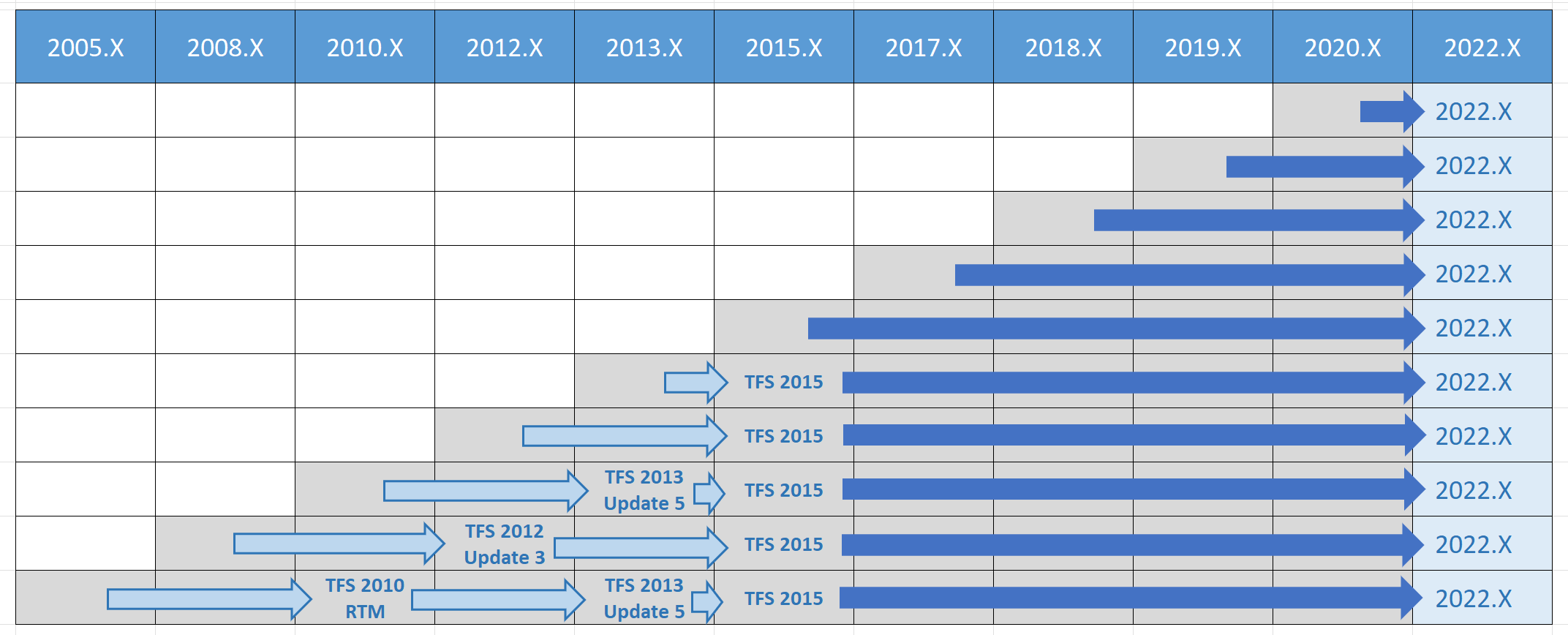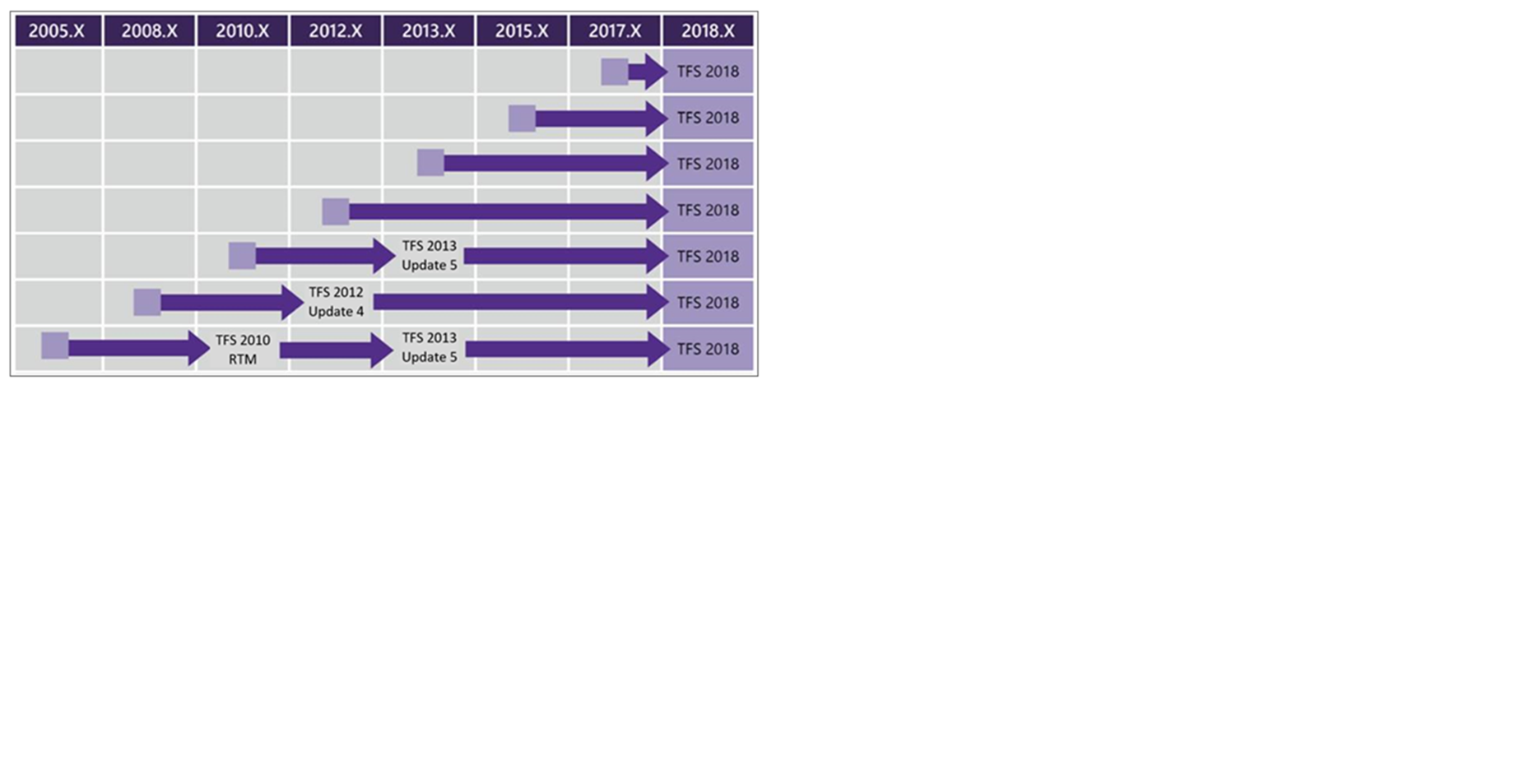Note
Access to this page requires authorization. You can try signing in or changing directories.
Access to this page requires authorization. You can try changing directories.
Azure DevOps Server |Azure DevOps Server |Azure DevOps Server 2022 | Azure DevOps Server 2020
This guide walks you through upgrading your on‑premises deployment to Azure DevOps Server. Whether you're moving from TFS 2015 or Azure DevOps Server 2019, the process ensures your environment is ready for the latest features and performance improvements.
Prerequisites
| Prerequisite | Details |
|---|---|
| Supported source version | Upgrades are supported only from TFS 2015 and later. If your deployment is running TFS 2013 or an earlier release, first upgrade that deployment to TFS 2015, then upgrade to Azure DevOps Server. |
| System requirements | Review the system requirements for the target server — this may include updates to operating systems, SQL Server versions, and hardware. |
| Database backups | Create a complete and consistent set of backups for all Azure DevOps databases. See Database backup and restore planning. These backups are critical for recovery if the upgrade fails. |
| Service account credentials | Ensure you have administrative access and credentials for the service accounts used by Azure DevOps Server. |
| License and product key | Have your Azure DevOps Server license and product key ready for installation and activation. |
| Pre-production environment (recommended) | If you're upgrading in place, perform a trial (dry‑run) in a pre-production environment to validate the process: Pre-production dry run. |
| Process model options | Decide whether to use the Inheritance or On‑premises XML process model for new project collections — this choice affects customization and reporting capabilities. |
Supported upgrade paths
Use the following upgrade matrix to determine the correct path based on your current version:



Deprecated features
The Configure Features wizard is no longer supported in Azure DevOps Server 2019 and later.
For information about updates to default system processes, see Changes made to process templates.
Availability of Inheritance process model for new project collections
Azure DevOps Server 2019 provides support for using the Inheritance process model to customize your work tracking experience. You can only get access to this feature by creating a new project collection. Existing project collections will only support the On-premises XML process model.
If you choose the Inheritance process model for new project collections, you also automatically choose the Analytics Service to support reporting. You can't add SQL Server reporting services to projects you add on the new project collections. If you choose the On-premises XML process model for new project collections, you have access to both the Analytics Service and SQL Server reporting services. This is also true for existing collections that you upgrade.
Consider your work tracking customization and reporting requirements as you move forward with new project collections. For more information about these choices, see the following articles:
Deprecation of the Configure Features wizard
In the past, the Configure Features wizard was used to update default process templates with updates made to them. This feature is no longer supported in Azure DevOps Server 2019.
To learn about updates made to default system processes, see Changes made to process templates.
Update complexity
Upgrade complexity depends on:
- Number of servers
- Integration with SQL Server Reporting Services
- Database size
- Current version
Regardless of setup, the core process remains the same: prepare, then upgrade.
Downtime
Your deployment is offline during the upgrade. Duration varies based on deployment size. To minimize downtime:
- Clean up unnecessary data
- Stay current with Azure DevOps Server releases